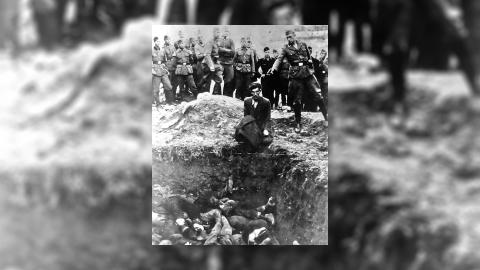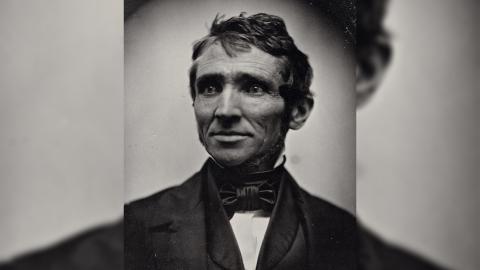George Stephenson
The ‘Father of Railways’, George Stephenson, built the first commercial locomotive and railways, setting a standard adopted worldwide. He also grew straight cucumbers competitively, married three times and may be why we call people from Newcastle, ‘Geordies’.
Born in 1781 near Newcastle to illiterate parents, George, unlike his stick-thin siblings, grows up strong and sturdy. His fireman father works at the local coalmine and can’t afford to school him. So George does farm work like cow-herding. By 10, he’s driving the horses that carry the coal carriages on the tramway going past his family’s one room cottage. Everything in the area revolves around the local pit and the rapidly expanding coal industry. One of George’s next jobs is picking stones out of the coal.
He progresses to working on the machines that lift miners up and down into the mine. When one of the veteran coalmen objects to the teenage George doing the job, he challenges him to a fist fight. George wins.
FROM RAGS TO READING
After finding work as an engine man, at 17, George pays for his own night school education. By 18, he can read, write and do arithmetic. He dates a farmer’s daughter but is rejected. His next love does the same. So, aged 19, he marries her sister. The couple live in a one room cottage. By 20, they have their first son, Robert. George cobbles and repairs clocks on top of his day-job to help family finances. They have a daughter. Aged just three weeks old, she dies and within months her mother joins her.
Desperate for work, Stephenson is forced to leave his son and go to Scotland. But he returns to care for his father when he’s blinded in a mining accident. When Stephenson fixes a broken pumping engine he’s put in charge of all the mine equipment. He takes to pieces and reassembles machines and engines whenever possible and develops an intricate understanding of steam-driven machinery. His son, Robert, shares his passions and one of their first projects is making a sun-dial. Robert will one day progress to be a Managing Director of his father’s first locomotive company.
FAST AND FURIOUS AT 4MPH
In 1814, aged 33, Stephenson combines the tramways and the steam engines to make the first commercially viable locomotive. ‘Blucher’ is built to haul coal. It’s named after the Prussian General who speed-marched his troops to help defeat Napoleon at Waterloo. The top speed of the Blucher is 4 mph. This may be slower than a horse can travel but its eight wagons carry 30 tonnes. It’s the beginning of the end of horsepower.
But the Blucher is prone to repeatedly breaking down, and its power and weight chew up the tracks. However each breakdown spurs Stephenson onto another solution.
NORTH V SOUTH
Having spent his working life in the coal mines, Stephenson’s seen firsthand the explosive danger of using naked flames in pits full of flammable gases. So, in 1815, he develops a lamp which uses tiny air holes to stop a reaction between the flammable gases produced in mines and the naked flame used in lamps. He demonstrates its safety by taking it down a mine, and using it next to the potentially explosive gas.
Down South, at the same time, and unknown to Stephenson, Britain’s leading scientist, Humphry Davy, produces an alternative version. The fact that a self taught virtual unknown could match one of Britain’s best brains leads to accusations that Stephenson had merely copied Davy’s design. It will take a Parliamentary inquiry to clear Stephenson’s name. Stephenson, already suspicious of the establishment, will never embrace his growing adulation. And neither man will ever forgive the other.
THE FIRST RAIL
In 1819 Stephenson creates an eight mile railway in Sunderland; the first railway to be solely machined powered. He patents his own cast iron rails and two years later he’s appointed engineer for the construction of the Stockton and Darlington railway. When Stephenson finds another man has invented better rails, he ditches his own invention and despite the cost uses the improved version.
Stephenson marries again, in 1820, but he will have no more children.
The railway opens in 1825. It’s the first public railway in the world. The first locomotive on it is the aptly named ‘Locomotion’. It’s not only driven by Stephenson, he owns the company that built it. The company, set up with his son Robert, is the first in the world to build locomotives.
BRUNEL VERSUS STEPHENSON
And crucially, Stephenson sets the width between the rails, the gauge, at four feet eight and a half inches. This seemingly small, simple decision will at first irritate, then exasperate and finally defeat one of the greatest Britons ever, Isambard Brunel.
Stephenson and Brunel would clash many times over their different visions for rail as their Northern and Western Lines come perilously close to each other. Reportedly, on their first encounter, Stephenson said to Brunel, ‘What business he had north of the Tyne?’
And ultimately, it is Stephenson’s vision, with his realisation that all rail lines will ultimately connect who will win. Stephenson’s measurement will first be used throughout Britain, and then the world. And Robert will consolidate his father’s legacy. The next year, Stephenson becomes engineer for the Liverpool to Manchester Railway.
THE ROCKET
In 1829, railway owners stage a competition to find the best locomotive. So as not to destroy the rails, only machines under six tonnes can compete. Ten locomotives apply. Five fail to make race day. Two further fail because of mechanical problems. Thousands witness Stephenson’s ‘Rocket’ achieve a record 36mph and take the prize. Celeb status follows for Stephenson. Americans flock to him, desperate to take his trains and techniques back with them to the US.
The Prime Minister and the hero of Waterloo, the Duke of Wellington, is just one of the great and the good to attend the opening of the Liverpool and Manchester railway in 1830. However, one of the government ministers is knocked down by the Rocket. Stephenson rushes him on another of his new locomotives for treatment. But the shock and blood loss are too much and the man dies.
Despite this, Stephenson now receives more work, and more money than he can handle. Excavations for his railways discover coalfields that make him rich enough to buy land and a large house. He tours England talking about how rail took him from rags to riches. In his later years, he competes, and beats his aristocratic neighbour...in an attempt to grow a straight cucumber.
Sadly, in 1845, his second wife dies. He marries for a third time but the marriage is short lived. Six months later, on 12 August 1848, in Chesterfield, Derbyshire, he dies.
He is buried next to his second wife.
The inventions he leaves behind accelerate the industrial revolution and help make the modern world.
















